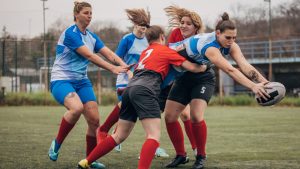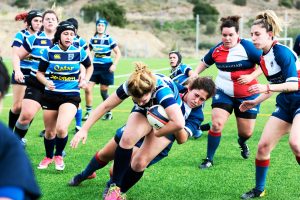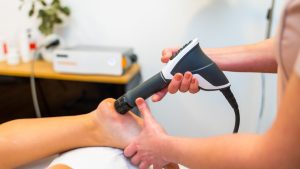Why the Australian Open is the Ultimate Fitness Test
The Australian Open is one of the most physically demanding tournaments of the year. Played in the peak of the Australian summer, temperatures inside Melbourne Park’s Rod Laver Arena can exceed 40 degrees Celsius.
When combined with the rigid nature of hard courts, this heat places extreme demands on players’ bodies (1). Matches at the Australian Open feature the highest movement speeds of all Grand Slam events. The aggressive rally patterns and high serve volumes contribute to cumulative fatigue (2).
In addition, many players arrive at the Australian Open after a pre-season period involving training on multiple surfaces. Recent research shows that players who switch surfaces frequently have a higher risk of injury, especially overuse injuries (3). This makes careful preparation and load management crucial.
Managing Heat: Training the Body for Hot Conditions
Preparation for the Australian Open starts weeks before the first ball is struck. Effective heat acclimation allows players to maintain performance and reduce fatigue in extreme conditions.
Best practice includes:
- Gradually increasing training exposure in hot environments
- Using interval training in warm conditions to elevate core temperature
- Monitoring sweat rate and adapting hydration strategies
- Incorporating recovery modalities to manage heat stress
- Using sleep optimisation to enhance recovery between matches (2)
Reid et al. (2016) highlight that serve and groundstroke volumes are particularly high on hard courts like Melbourne Park, increasing the physiological strain during extended matches (2).
Key Strength and Conditioning for Extreme Heat Tennis
Lower Body Strength and Endurance
Trap Bar Deadlifts
- Stand inside a trap bar with feet shoulder-width apart
- Grip the handles and keep the chest lifted
- Drive through the heels to stand up tall, hips extending fully
- Lower with control
- Perform 6 to 8 repetitions
- Complete 3 sets
Step-Through Lunges
- Start standing tall
- Step forward into a deep lunge
- Push back to standing, then step backwards into a reverse lunge on the same leg
- Perform 8 to 10 repetitions per leg
- Complete 3 sets
Power and Agility
Multidirectional Hops
- Start in an athletic stance on two feet
- Hop forward, backward, and laterally with quick, controlled landings
- Perform 8 to 10 hops in each direction
- Complete 3 sets
Medicine Ball Slams
- Hold a medicine ball overhead
- Forcefully slam it to the ground, using full body rotation and hip drive
- Catch the rebound and repeat
- Perform 10 to 12 repetitions
- Complete 3 sets
Hydration, Nutrition, and Recovery Strategies
Maintaining hydration and electrolyte balance is crucial at the Australian Open. Dehydration leads to rapid declines in both cognitive and physical performance (1).
Key approaches include:
- Pre-match hydration protocols based on sweat testing
- Intra-match electrolyte drinks tailored to individual sweat composition
- Targeted carbohydrate intake to support endurance
- Cooling strategies such as ice towels and shaded recovery areas between sets
- Immediate post-match rehydration with a blend of water, electrolytes, and carbohydrates
Reid et al. (2016) further emphasise that serve repetitions are particularly high at the Australian Open. This contributes to upper limb fatigue and highlights the importance of focused hydration and recovery strategies (2)
Adapting Game Tactics for Heat
Players at the Australian Open also adapt their tactical approach to manage heat stress:
- Emphasising aggressive first-strike tennis to shorten points (2)
- Using serve placement to immediately put the opponent under physical strain
- Taking longer between points within the rules to aid recovery
- Choosing shot selections that reduce court coverage demands
Players who have recently switched surfaces prior to the Australian summer should also be aware of increased injury risk during this adaptation phase (3). Tactics should be adjusted gradually to allow for safe loading on hard courts. In training, this tactical mindset is reinforced with:
- Serve plus one drills
- Aggressive return and follow-up patterns
- Scenario-based practice simulating hot match conditions
2025 Heat Acclimation Methods in Elite Tennis
Leading players now incorporate:
- Heat chamber training to mimic Australian conditions (2)
- Wearable technology tracking core temperature during training
- Blood marker testing to monitor hydration and electrolyte status
- Sleep optimisation protocols to support recovery from heat stress (2)
- AI-based workload tracking to fine-tune training loads during heat adaptation
Many of these approaches can also be scaled for club-level and amateur players preparing for hot-weather tennis.
Lessons Any Player Can Learn from Australian Open Stars
Training for extreme heat builds:
- Improved cardiovascular efficiency
- Greater mental resilience
- More effective hydration and recovery habits
- A deeper understanding of tactical pacing in difficult conditions
Dragoo (2010) reminds us that hard courts remain associated with a higher risk of overuse injuries compared to clay, making load management critical at the Australian Open (1).
Additionally, as Babette et al. (2016) found, players who transition between multiple surfaces are at higher risk of injury (3). This highlights the importance of progressive training and recovery planning during the lead-up to the tournament.
The Australian Open is an unparalleled test of fitness, tactical intelligence, and recovery mastery. Players who prepare properly gain a significant advantage, not only in performance but in injury prevention and long-term health.
Integrate these training and recovery principles into your pre-season programme, and you will arrive on court ready to handle the heat.
Final Thoughts
The Australian Open is an unparalleled test of fitness, tactical intelligence, and recovery mastery. Players who prepare properly gain a significant advantage, not only in performance but in injury prevention and long-term health.
Integrate these training and recovery principles into your pre-season programme, and you will arrive on court ready to handle the heat.
This completes the Grand Slam Tennis Fitness Series. Review all four parts to build a year-round, surface-specific training strategy for peak tennis performance. strategy for peak tennis performance.
References:
- Dragoo JL, Braun HJ. The Effect of Playing Surface on Injury Rate: A Review of the Current Literature. Sports Med. 2010;40(11):981-990.
- Reid M, Morgan S, Whiteside D. Matchplay characteristics of Grand Slam tennis: implications for training and conditioning. J Sports Sci. 2016;34(19):1791-1798.
- Pluim BM, Clarsen B, Verhagen E. Injury rates in recreational tennis players do not differ between different playing surfaces. Br J Sports Med. 2018;52(611-615).




